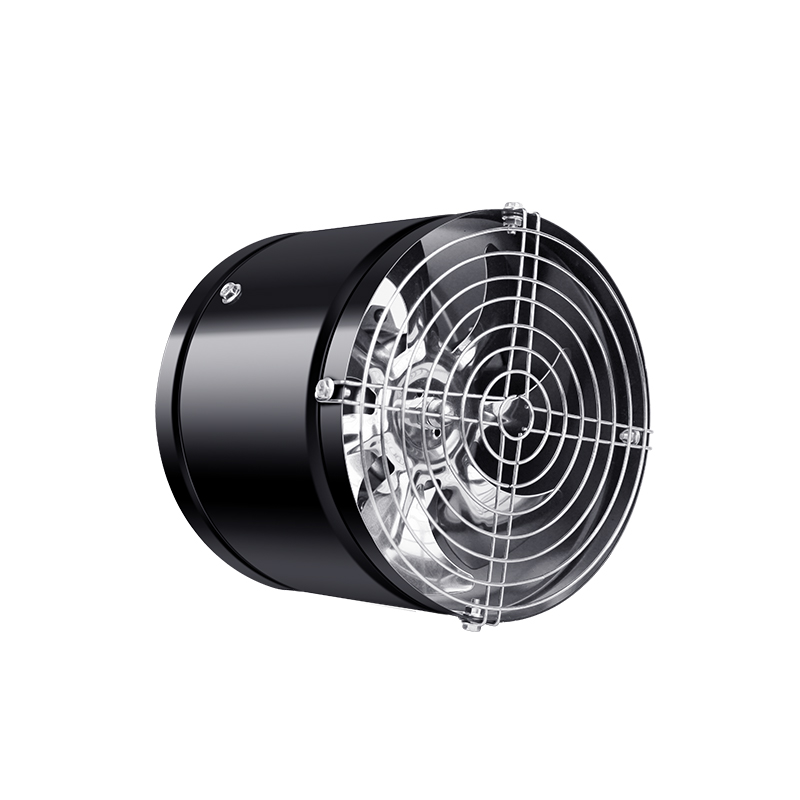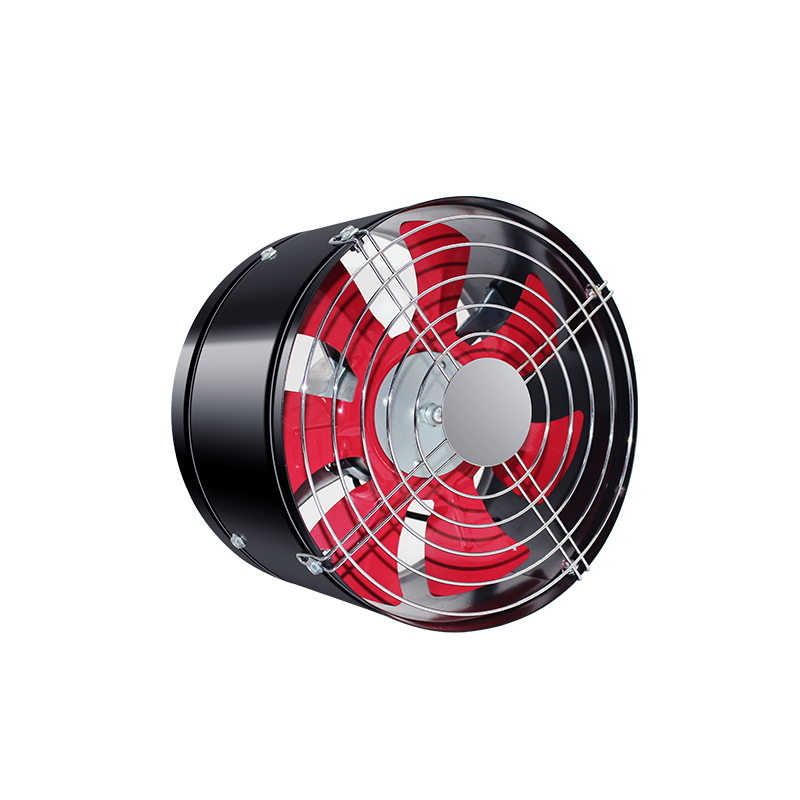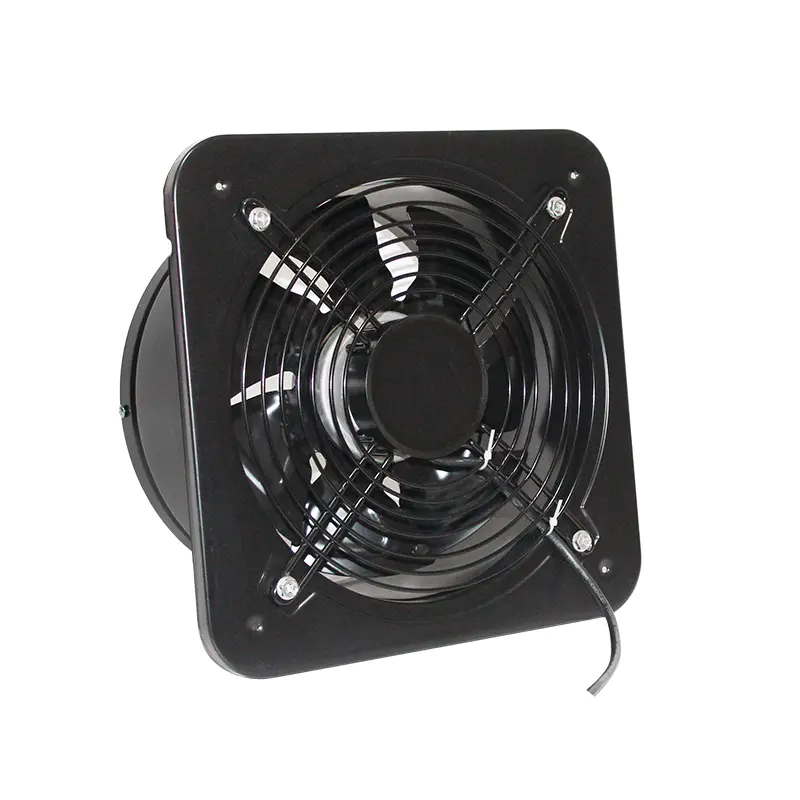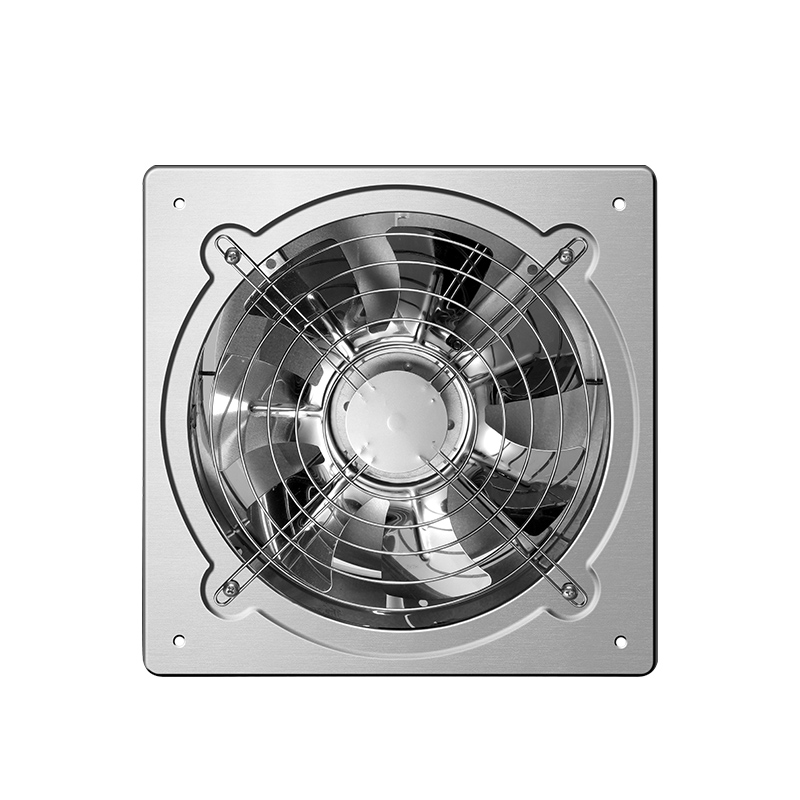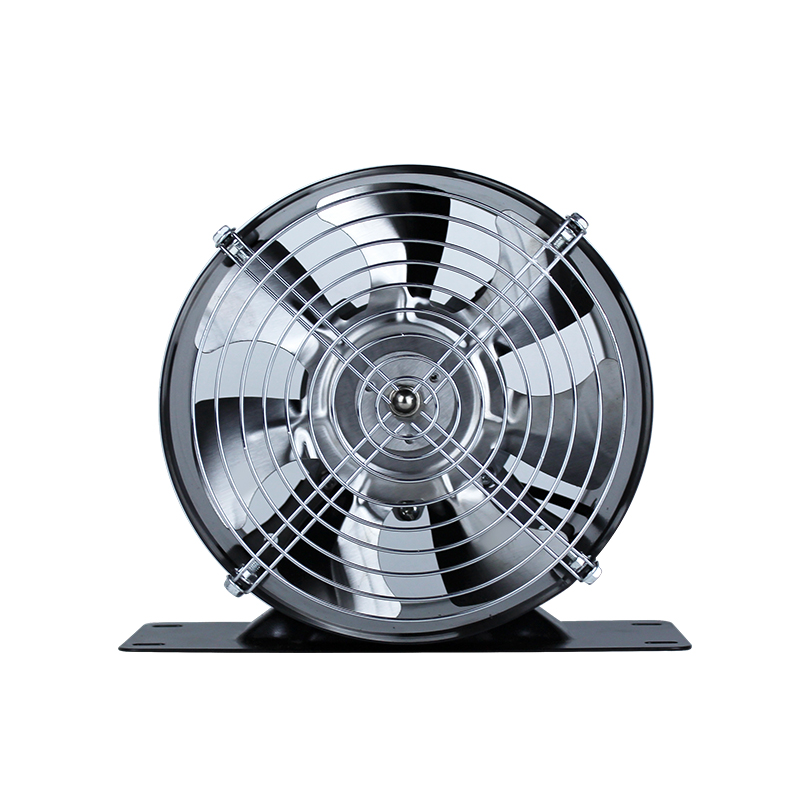News
The Complete Guide to Duct Ventilation Fans: Selection, Installation, and Maintenance
- 1 Why Is Duct Ventilation So Crucial?
- 2 Understanding Duct Ventilation Fans
- 3 A Complete Guide to Duct Ventilation Fans: Selection, Installation and Maintenance
- 4 Frequently Asked Questions (FAQ)
- 4.0.1 1. What CFM should I choose for my duct ventilation fan?
- 4.0.2 2. What can I do if my duct ventilation fan is too noisy?
- 4.0.3 3. Do I need a professional electrician to install my duct ventilation fan?
- 4.0.4 4. How do I know if my duct ventilation fan needs to be replaced?
- 4.0.5 5. What are the advantages of the company's products?
Why Is Duct Ventilation So Crucial?
Duct ventilation fans play a vital role in modern buildings. They are more than simple air circulation devices; they are key to maintaining indoor air quality and human health. While many people only think of them for kitchens or bathrooms, their importance is far broader.
An efficient duct ventilation system can:
- Remove Pollutants and Odors: Effectively expel cooking smoke, moisture, mold spores, chemical smells, and other harmful indoor air pollutants. This is essential for maintaining a fresh, healthy living or working environment.
- Control Humidity: In damp areas like bathrooms or basements, duct ventilation fans can quickly remove moisture, preventing the growth of mold and mildew and protecting the building's structure.
- Improve Air Quality: By introducing fresh air or expelling stale air, a duct ventilation system helps dilute indoor CO2 (carbon dioxide) concentrations and reduces airborne allergens, supporting respiratory health.
Duct Ventilation Fans vs. Standard Exhaust Fans
While both are used for exhaust, duct ventilation fans differ significantly from standard exhaust fans in performance and application. Here's a comparison of their key parameters:
| Feature | Duct Ventilation Fan | Standard Exhaust Fan |
|---|---|---|
| Installation | Typically installed inside ductwork or in non-visible locations like attics. | Usually installed directly on a wall or ceiling, exposed to the room. |
| Performance | High static pressure, capable of overcoming air resistance from long ducts, bends, and filters to maintain efficient airflow. | Low static pressure, suitable only for short-distance, low-resistance exhaust, such as direct through-wall venting. |
| Noise Level | Fan body is located away from the vent, generally resulting in lower and quieter operation. | Fan is directly at the vent, making the noise relatively louder, especially at high speeds. |
| Application | Suitable for long-distance, complex ductwork exhaust, such as large kitchens or centralized venting for multiple rooms. | Suitable for simple, direct exhaust, such as small bathrooms or storage closets. |
Understanding Duct Ventilation Fans
What Is a Duct Ventilation Fan?
A duct ventilation fan is an air-handling device specifically designed to be installed inside ventilation ducts. Unlike a traditional exhaust fan, its primary function is to overcome the resistance (static pressure) of the ductwork, effectively moving air from one area to another. It maintains powerful ventilation even with long or winding ducts.
They are typically installed in discreet locations like attics, ceilings, or in the middle of duct runs. The ductwork then connects to the rooms that need ventilation, such as kitchens, bathrooms, or garages. This design makes duct ventilation fans quieter and saves indoor space.
Types of Duct Ventilation Fans
Duct ventilation fans are primarily categorized by their working principle and installation method. Understanding these types will help you choose the right product for your specific application.
1. By Working Principle:
| Type | Working Principle | Pros | Cons | Ideal Application |
|---|---|---|---|---|
| Centrifugal | Uses centrifugal force to draw air in at the center and expel it at a 90-degree angle. | High static pressure to overcome resistance from long, complex duct systems. Relatively quieter. | Generally more expensive, and can be slightly bulkier. | Suitable for complex, long-distance, high-static-pressure exhaust systems in large homes or commercial buildings. |
| Axial | Uses spinning blades to generate thrust, moving air parallel to the fan's axis. | High airflow volume, simple structure, compact, and relatively inexpensive. | Low static pressure, not suitable for long-distance or ductwork with many bends. | Suitable for short-distance, low-resistance exhaust, such as straight duct runs or direct through-wall venting. |
2. By Installation Method:
| Type | Installation Location | Pros | Cons | Ideal Application |
|---|---|---|---|---|
| Inline | Installed directly within the ventilation duct. | Saves indoor space, low noise as the fan body is away from the vent. Easy to service. | Requires more space for duct installation. | Suitable for almost all scenarios requiring duct ventilation, this is the most common type of duct ventilation fan today. |
| Ceiling-mounted | Typically installed in a ceiling or wall, with the fan body and vent integrated. | Relative simple to install, ideal for rooms without pre-existing duct space. | Can be louder than inline fans because the fan is located directly in the room. | Suitable for simple exhaust needs in small bathrooms or storage rooms without complex ductwork. |
A Complete Guide to Duct Ventilation Fans: Selection, Installation and Maintenance
How to Select the Right Duct Ventilation Fan
Choosing the right duct ventilation fan is crucial for ensuring your system runs efficiently. You need to consider several key parameters and your specific needs.
1. Calculate Required Airflow (CFM)
Airflow (CFM, or Cubic Feet per Minute) is the most important metric. It represents the amount of air the fan can move per minute. You should calculate this based on the room's volume and purpose.
- Room Volume (cubic feet) = Length x Width x Height
- Required CFM = Room Volume / Air Exchange Time (minutes)
Recommended air exchange times vary by room:
- Bathrooms: Recommended to exchange air 8 or more times per hour, or once every 7.5 minutes.
- Kitchens: Recommended to exchange air 10-15 times per hour, or once every 4-6 minutes.
- Garages/Workshops: Based on pollutant concentration, typically 6-8 exchanges per hour.
2. Consider Static Pressure
Static pressure is the fan's ability to overcome duct resistance. If you have long ducts, multiple bends, filters, or grilles, you need a high-static-pressure duct ventilation fan.
- High Static Pressure Fans: Suitable for long-distance or complex duct systems, maintaining consistent airflow. These are typically centrifugal fans.
- Low Static Pressure Fans: Suitable for short, straight ducts. Airflow drops significantly as duct resistance increases. These are typically axial fans.
3. Noise Level (Sones)
Sones is the unit for measuring fan noise, with a lower number indicating a quieter fan.
- Below 1.0 Sones: Extremely quiet, almost inaudible.
- 1.0 - 2.0 Sones: Slight sound, similar to a running refrigerator.
- 2.0 Sones and above: Noticeable noise that may affect comfort.
When choosing a duct ventilation fan, especially for areas near bedrooms or living rooms, prioritize models with a low Sones rating.
Installation Steps for Duct Ventilation Fans
Correct installation is critical for the performance and longevity of your duct ventilation fan.
- Placement and Planning: Choose an accessible location that effectively covers the ventilation area, usually an attic or ceiling void. Plan the duct path to minimize bends, which reduces static pressure loss.
- Mounting the Fan Body: Use specialized mounting brackets or hangers to securely fasten the duct ventilation fan to a beam. Ensure it is level and stable to minimize vibration and noise.
- Connecting the Ducts: Use clamps or zip ties to tightly connect the fan's duct ports to the ventilation ducts. Use foil tape or a dedicated sealant to seal all connections, preventing air leaks.
- Electrical Connection: Have a qualified electrician perform the wiring according to the product manual and local electrical codes. Ensure all wiring is safe, properly insulated, and correctly grounded.
Routine Maintenance for Duct Ventilation Fans
Regular maintenance can extend the lifespan of your duct ventilation fan and keep it performing at its best.
- Regular Cleaning (Every 6-12 months): Disconnect power, then remove the fan cover or intake grille. Use a vacuum or damp cloth to clean dust and dirt from the fan blades and interior. Ensure all parts are dry before reassembling.
- Inspect Ducts and Connections: Check the ventilation ducts for cracks, loose connections, or blockages. Ensure all duct connections are still tight and free of air leaks.
- Listen for Abnormal Noises: Periodically run the duct ventilation fan and listen for unusual scraping, buzzing, or vibrations. This could indicate a bearing needs lubrication or a component has come loose.
Frequently Asked Questions (FAQ)
1. What CFM should I choose for my duct ventilation fan?
Choosing the right CFM (Cubic Feet per Minute) is key to effective ventilation. You can calculate the required CFM based on the room's volume and purpose.
- Formula: Room Volume (Length × Width × Height) ÷ Air Exchange Time = Required CFM.
- Usage Reference:
- Bathrooms: An air exchange rate of 8 or more times per hour is recommended, so the exchange time is 7.5 minutes.
- Kitchens: An air exchange rate of 10-15 times per hour is recommended, so the exchange time is 4-6 minutes.
- Industrial Workshops/Warehouses: The exchange frequency is higher, based on specific pollutant concentrations and needs.
2. What can I do if my duct ventilation fan is too noisy?
Noise from a duct ventilation fan is usually related to static pressure, installation method, and product quality. If you have a noise problem, you can try the following:
- Choose a Low-Sones Product: When purchasing, select a product with a low Sones rating (a unit of noise measurement; the lower the number, the quieter the fan).
- Correct Installation: Ensure the fan is securely mounted without any looseness or vibration. Using sound-dampening material around the fan and ducts can also reduce noise.
- Regular Maintenance: Clean the fan blades to remove dust and dirt, which keeps the fan running smoothly.
3. Do I need a professional electrician to install my duct ventilation fan?
It is highly recommended that a professional electrician handles the electrical installation of a duct ventilation fan. Fan wiring involves high voltage, and incorrect installation could lead to safety hazards like short circuits or electric shock. A professional electrician can ensure:
- Safety and Compliance: All local electrical codes and standards are followed.
- Correct Wiring: The fan is properly grounded and all connections are secure.
- Efficient Operation: The fan is wired correctly to perform at its best.
4. How do I know if my duct ventilation fan needs to be replaced?
Several signs indicate that your duct ventilation fan may need replacement:
- Decreased Performance: You notice that ventilation is less effective and air isn't being moved well.
- Abnormal Noises: The fan produces loud scraping, buzzing, or persistent strange sounds.
- Overheating: The fan's housing feels hot to the touch, which can be a sign of an aging motor.
- Physical Damage: There is visible damage to the housing, blades, or motor.
5. What are the advantages of the company's products?
Based on the company profile, Shengzhou Qiantai Electric Appliance Co., Ltd., as a professional enterprise designing, producing, and selling ventilation fans, has the following product advantages:
- Wide Application: Products are certified by the China Quality Certification Center and are widely used in exhaust/cooling systems for home kitchens, restaurants, factories, pipelines, and warehouses.
- Technical Strength: The company possesses strong technical capabilities, robust independent innovation, advanced production and testing equipment, and a perfect management system.
- Quality and User Experience: The company upholds reliable product quality and user experience, striving to provide excellent energy-saving products.
- Professional Product Line: Specializing in the production of exhaust fans, ventilation fans, axial fans, industrial fans, and their supporting motors, the company offers a rich and diverse product line.
Diagonal Flow Booster Powerful Duct Fan Industrial Exhaust Fan


 English
English 中文简体
中文简体
